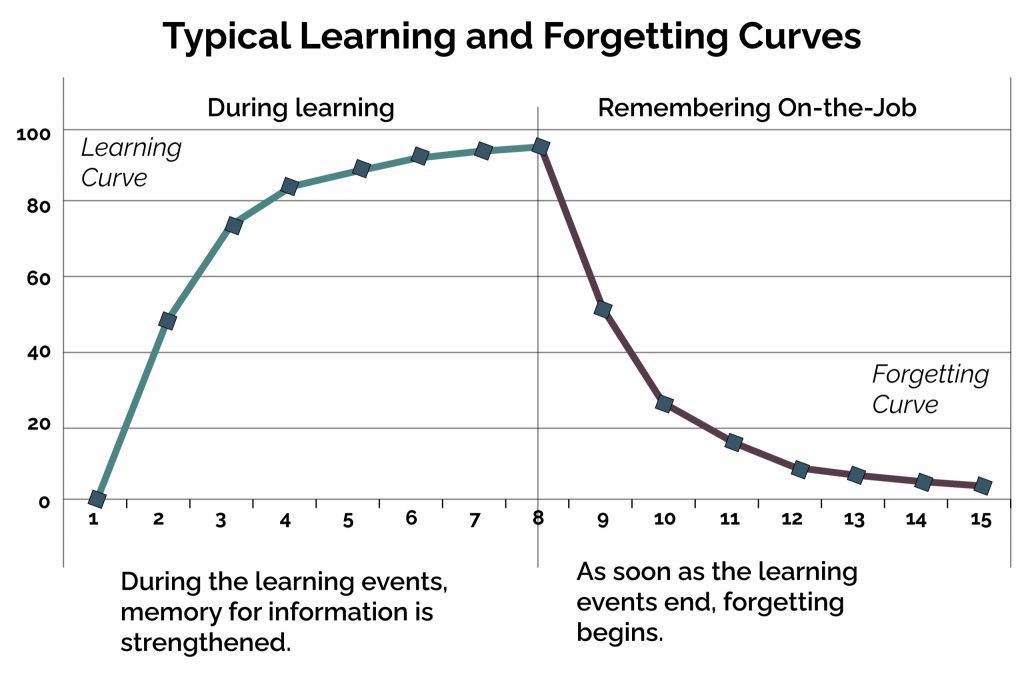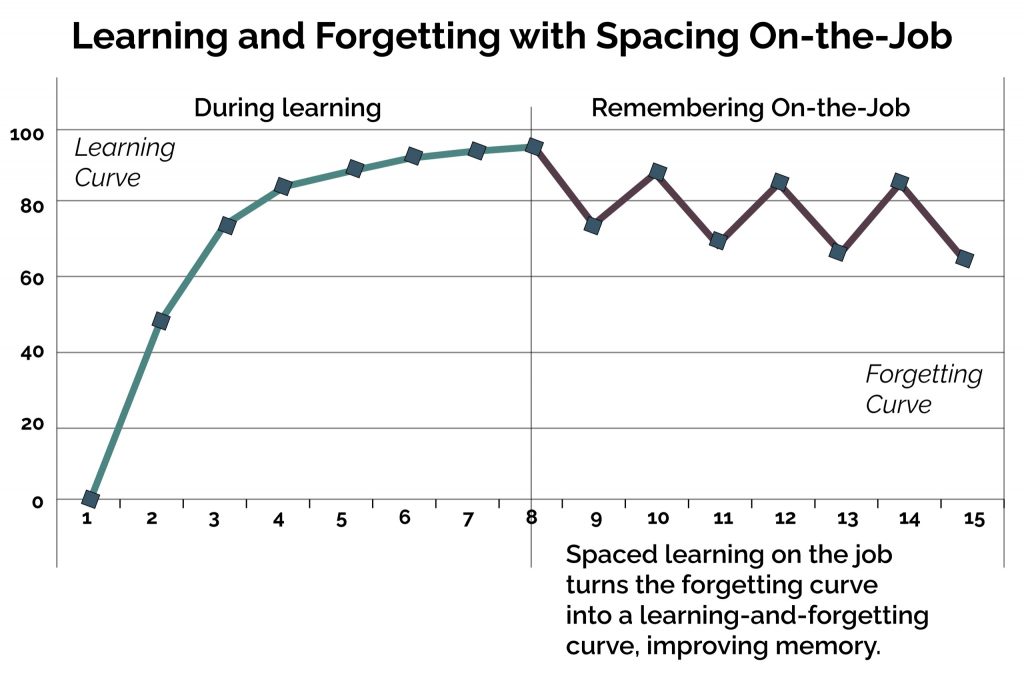One of the biggest challenges for organizations is what happens after the training. Typically, training is seen as an isolated event. Afterward, many learning development professionals and supervisors find themselves asking, “why is the employee not using the information from training” or “why hasn’t the employee’s performance increased following training.” Questions such as this suggest that knowledge transfer did not occur after the employee left the classroom or virtual training session.
This article will explore the design of the training and execution phase of training in driving effective knowledge transfer in the workplace.
What is Knowledge Transfer?
For training to be practical, both learning and transfer of training need to occur. Knowledge transfer can be defined as a learner’s ability to apply the behavior, knowledge successfully, and skills acquired in a learning event to the job, resulting in improved job performance. Trainees can fail to apply training content to their jobs incorrectly, either because the training was not conducive to learning. The work environment provides them with the opportunity to use the training content or supports its correct use. So, how does an organization avoid this as much as possible? First, consider knowledge transfer during the design or purchase of training, and second develop an execution plan to reinforce the expected learning outcomes of training. Often, knowledge transfer is considered after training has already occurred. However, the trainees’ perception of the work environment and its support for training has influenced their motivation to learn.
Design of Training
As a first step in improving knowledge transfer, let us consider the design of training. Training design includes evaluating how to create a learning environment to help the trainee acquire the learning outcomes. Boring lectures, lack of meaningful content in e-learning, and training that doesn’t allow employees to practice and receive feedback-all methods demotivate trainees and make it difficult for them to learn and use what they have learned. However, many companies are using innovative instructional strategies to make training more exciting and to help trainees apply it to their work.
Technique 1: Incorporate Different Training Methods.
Mirror the workplace: The similarity of the tasks and materials in the learning event and the learners’ work environment affects the knowledge transfer rate. Machin and Fogarty, two researchers, found that learning transfer increases when the physical characteristics of the tasks and the learning environment match the performance environment.
- This instructor-led training can be combined with leader-led discussions with interactive assignments that participants complete in groups in virtual breakout rooms. The benefit of this approach is it offers trainees the opportunity to engage with the learning material and immediately apply it to their daily work. The sooner the trainee can apply the knowledge, the better for knowledge transfer.
- Include polling scenarios within webinars that reflect common instances in which the trainee will use the information taught. This keeps learners engaged and ready to apply knowledge after training.
Model the way: Modeling is a technique shown to increase learning transfer, as it provides a demonstration of how to apply learning on the job. This can quickly be done through virtual reality training, which according to LinkedIn, education continues to be on the rise. Modeling will apply learning in training and allow learners to practice will learn in training and increase learning transfer by as much as 37 percent, according to Michael Limbach, who has researched several approaches to enhancing learning effectiveness and transfer.
Space it Out: Learning transfer is impossible if learners forget what they learned in training. Use spaced repetition in your training program to minimize the forgetting curve. For example, send snapshots of learning content before the main training event, and follow up with detailed summaries of key topics after training. Will Thalheimer, in his 2006 work, “Spacing Learning Events Over Time: What the Research Says,” identifies that although learning and memory are vital during a training event, knowledge is rapidly forgotten afterward.

He also points out that spacing reinforcement, which is spaced repetition or interval reinforcement on the job after training, enhances how much trainees will retain and apply to their work. Thalheimer and many other researchers identify are that the closer in time learning is delivered to the situations when it is needed, the less forgetting will be a factor. Applying spaced repetition for learning transfer can occur immediately after training and is built into your training plan’s execution phase. Again, remember learning transfer should be part of the organization’s training strategy before training is implemented.

Technique 2: Ask your Target Audience
In designing training programs, a small focus group comprised of the training target audience can help a learning designer assess what trainees need or desire from the training. Gathering such feedback could enhance the training program, thus improving knowledge transfer to occur following training.
After the Training Event
As mentioned previously, interval reinforcement can be implemented to help curve forgetting after initial training. Organizations can apply this approach by delivering the training information via daily emails, hosting lunch and learns, or using virtual reality tools to amplify employee engagement in the learning journey.
By implementing a consistent post-training interval reinforcement program of learning, organizations can ensure the learning process continues and can be applied on the job. Here at Radiant Digital, we can help you map an effective training strategy, starting with a need assessment through effective knowledge transfer methods to occur in your organization.
Nothing found.